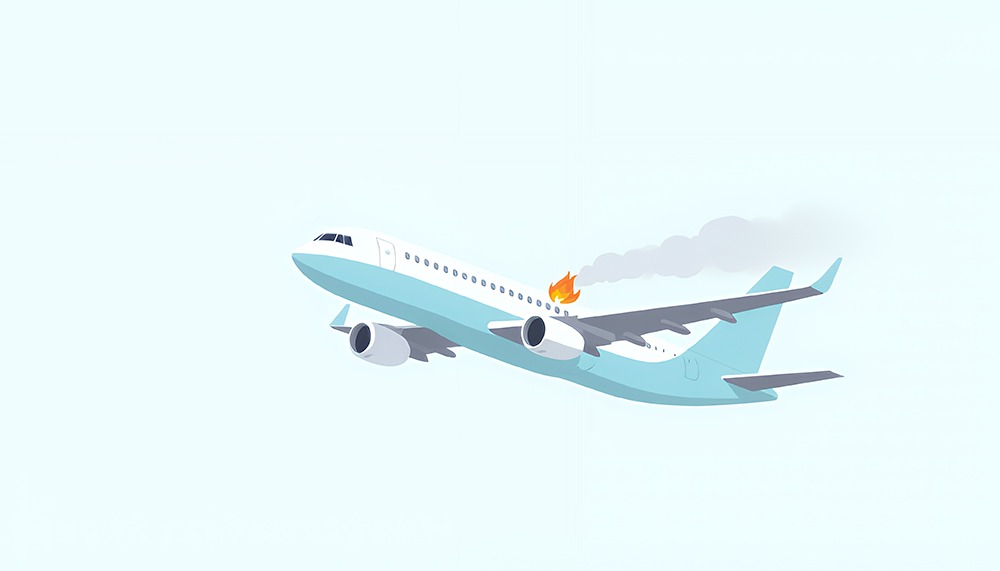How Pilot Mistakes and Safety Failures Lead to Aviation Injury Claims
Share:
Flying is statistically one of the safest ways to travel, but when aviation accidents occur, they often make headlines—and for good reason. Whether it’s a commercial airline crash, a private jet mishap, or even a helicopter accident, the consequences can be devastating. Victims and their families are left asking: What went wrong?
The truth is, aviation accidents rarely happen for a single reason. They often result from a chain of errors, mechanical issues, or environmental factors. Understanding the common causes of aviation accidents is not only important for prevention but also plays a huge role in determining liability in injury claims.
Pilot Error: When Human Judgment Fails
It may surprise you to learn that pilot error accounts for more than 50% of aviation accidents worldwide. Despite rigorous training, flight crews are still vulnerable to fatigue, stress, and split-second decision-making mistakes. Common examples include:
- Miscalculating speed or altitude during landing and takeoff
- Miscommunication with air traffic control
- Inadequate response to in-flight emergencies
- Overreliance on autopilot or ignoring warning systems
Real-World Illustration: Asiana Airlines Flight 214 (2013) crashed during its landing in San Francisco because pilots misjudged their descent speed. The accident killed three people and injured over 180 others. Investigators determined that better training and oversight could have prevented the tragedy.
Impact on injury claims: When pilot error is proven, airlines may be held liable for negligent hiring, training, or scheduling practices. Injured passengers (or their families) may pursue claims not just against the pilot but also against the airline itself for systemic failures.
Mechanical Failures: When Technology Breaks
Airplanes are marvels of engineering, but with thousands of moving parts, things can—and do—go wrong. Mechanical failures account for 15–20% of aviation accidents, and they often involve critical systems. Common mechanical culprits include:
- Engine malfunctions
- Landing gear failures
- Electrical or navigation system defects
- Poorly maintained or defective parts
Example: In 1989, United Airlines Flight 232 suffered a catastrophic engine failure that led to a crash landing in Sioux City, Iowa. Though many lives were lost, survivors credited the crew’s heroic efforts. The case highlighted both the dangers of mechanical breakdowns and the importance of backup safety systems.
Impact on injury claims: Mechanical issues may lead to lawsuits not only against the airline (for negligent maintenance) but also against manufacturers under product liability law. Proving whether the problem stemmed from faulty design, improper maintenance, or poor oversight is key to these claims.
Weather Conditions: Nature’s Uncontrollable Factor
Weather is a constant factor in aviation and, while modern aircraft are designed to handle difficult conditions, nature can still overwhelm even the most skilled pilots. Fog, thunderstorms, high winds, and icing are all common causes of aviation accidents.
Example: American Eagle Flight 4184 (1994) tragically crashed due to severe icing conditions, killing all 68 people on board. This incident spurred significant reforms in pilot training and aircraft design to better handle icing.
Impact on injury claims: While you can’t sue the weather, airlines and pilots are expected to make safe judgment calls. If it’s shown that a flight should have been delayed or rerouted due to weather risks, the airline may still be held accountable for negligence.
Other Human Factors: Mistakes Beyond the Cockpit
Pilots aren’t the only humans whose actions matter. Aviation safety also depends on air traffic controllers, maintenance crews, and ground personnel.
- Air traffic control errors can cause mid-air collisions or runway incidents.
- Maintenance oversights may allow aircraft to fly with undetected problems.
- Ground crew mistakes in fueling or loading cargo can destabilize aircraft.
Impact on injury claims: These situations often lead to multi-party liability, where victims may sue airlines, third-party contractors, or even government agencies depending on who was responsible for the oversight.
The Numbers: Aviation Accident Statistics
To better understand the scope:
- 80% of aviation accidents involve human error (pilots, controllers, or maintenance).
- 15–20% stem from mechanical failures.
- Weather-related accidents account for a smaller percentage overall but are often more deadly.
(Source: National Transportation Safety Board – NTSB)
These statistics show why investigating every accident thoroughly is critical—not only to prevent future tragedies but also to ensure victims are properly compensated.
How Accident Causes Affect Aviation Injury Claims
When passengers or crew seek justice after an accident, cause matters.
Pilot error cases → Often lead to claims against the airline for negligent training or scheduling.
Mechanical failures → May involve lawsuits against manufacturers under product liability law.
Weather-related accidents → Focus on whether safe judgment was exercised by pilots and airlines.
Other human errors → May implicate contractors, ATC, or government entities in multi-defendant cases.
Types of damages victims may recover:
- Current and future medical costs
- Lost wages and reduced earning capacity
- Pain, suffering, and emotional trauma
- Wrongful death compensation for families
- In some cases, punitive damages if gross negligence is proven
Final Thoughts: Flying Is Safe, but Accountability Is Critical
Air travel remains one of the safest ways to get from point A to point B. But when accidents occur, they are often catastrophic—and they rarely stem from “bad luck.” More often, they’re the result of human error, mechanical failure, or poor decision-making in dangerous conditions.
For victims and families, understanding the cause isn’t just about closure—it’s the foundation of an aviation injury claim. By pinpointing responsibility, the legal system ensures accountability and provides compensation for those harmed.
At DuFault Law, we work with victims of aviation accidents to uncover what happened, pursue claims against negligent parties, and fight for the justice our clients deserve.
Were You or a Loved One Injured in an Aviation Accident?
If you’ve been hurt in a plane crash—or lost someone you love—you don’t have to face the aftermath alone. Aviation accidents are complex, often involving multiple causes like pilot error, mechanical failure, or weather conditions, and determining liability requires an experienced legal team.
At DuFault Law, we dig deep to uncover the truth, hold negligent parties accountable, and fight for the maximum compensation you deserve.
- Call us at (239) 422-6400
- Email us at contact@dufaultlaw.com
- Or Visit our Contact Page to schedule a consultation



Comments are closed